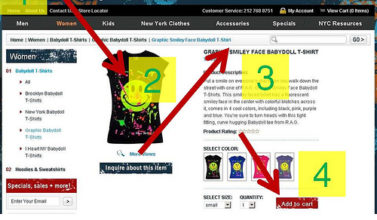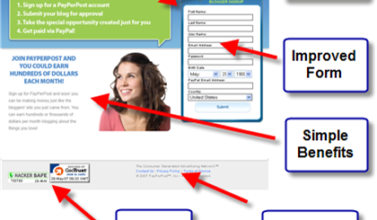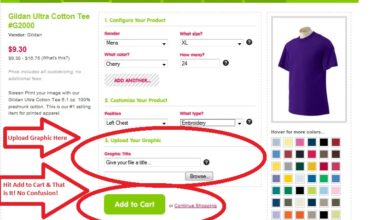
The world of mobile continues to grow as Internet connectivity is improving while smartphones are getting smarter. Does your brand have a truly mobile-friendly website?
In today’s fast-paced digital world, technology is continuously advancing which creates opportunities for instantly accessible information. This leaves consumers eager to find more and more information about products, services and brands in general. With all the available mobile technologies, everyone wants instant access to information regardless of where they are located or the type of device they have.
Giving consumers access to ‘data-on-the-go’ should be a top priority for nearly every business in the world today. Customers want a better user experience on mobile and brands who can deliver will reap the rewards on multiple fronts. This is why a mobile-friendly website is of the utmost importance to ensure mobile users enjoy a seamless experience.
How Does A Mobile-Friendly Website Work?
A mobile-friendly website is like a normal website but it’s specially optimised to display web content better on smartphones and tablets. In other words, a mobile-friendly website will automatically adjust to the screen size and resolution of the mobile device that is being used. This special formatting of the interface makes it much easier for visitors to read the content of your website. It also makes navigation easier as the text gets bigger and images to render accordingly.
The Importance Of A Responsive Website
Brands who don’t have responsive websites today will almost certainly lose out to competitors who do. People today increasingly use mobiles and tablets to shop online and often switch between devices. Even if consumers don’t buy online, they will do online research before they shop. In many cases, they even turn to their mobile devices for more information while in the store.
Considering that Google determines SEO rankings based on the mobile-first concept, it would be foolish not to invest in a mobile-friendly website. While it doesn’t mean that a desktop version won’t rank if you don’t have a mobile site but it could ultimately impact your overall ranking. There is a great article on Moz Blog explaining how mobile-first indexing works and the impact on SEO.
What Are The Benefits Of A Mobile-Friendly Website?
A good user experience (UX) can differentiate your brand from the rest and provide a significant competitive edge. If your online content is fun, interesting and easy to use across multiple devices, visitors won’t need to go elsewhere.
Designing a quality mobile-friendly website may take a little longer but it is worth the effort in the end. There are numerous benefits for your business when optimising your website for mobile devices. Let’s take a brief look at the most important advantages.
More Website Traffic
People use their smartphones, laptops or desktops every day and almost everywhere, even while watching television. The sheer nature of the digital world allows people to also use them while travelling for fun or business and even at work. A mobile-friendly website can really help improve organic search results and drive more traffic to your website.
Improved User Experience
It’s important to keep the basics in mind when designing a responsive website or updating an existing one. Think more in terms of simplicity instead of sensationalism. The user’s experience should be at the centre of all your design choices and decisions. When your customers can easily access your website and quickly find what they’re looking for, you greatly improve their user experience.
Considering that Google also indexes user experience to rank websites in search engines, it’s best to create something with the user in mind. It’s simple really; if the user experience is good then you will have a higher SEO ranking. The happier a visitor gets from interacting with a product or digital asset, the more likely they are to convert.
Better Conversions
Speaking of conversions, the increased flow of web traffic can present you with more opportunities to connect and engage with possible leads. With good user experience and an optimised website, your chances of converting leads into customers increase.
Brands without an optimised website don’t offer users a simple and convenient search solution. This can easily result in losing existing and potentially promising customers as they will likely look at a competitor’s mobile-friendly website instead.
What About Bounce Rate?
Websites that are designed for desktop only don’t render very well on mobile devices. This almost always leads to mobile users on your site leaving the moment they get there without a second thought. Another downside is that these types of websites typically take much longer to load when viewed on mobile devices. You don’t want mobile users to squint, zoom in or install add-ons just to display your website as this could result in high bounce rates.
However, if you have a mobile-friendly website, the chances of visitors leaving are greatly reduced. Remember, the bounce rate is also a ranking factor that Google and other search engines take into account. Since you provide mobile users with a better online experience, they are more inclined to engage with you. This makes them feel like your brand is worth their while and they often remain on your site for longer.
To read more about how search engines rank online content, check out our ‘Basic SEO Guide For Beginners’.
Brand Loyalty
If you consistently offer customers what they are looking for like quality content and better user experience, customer loyalty will follow. Continue on this positive trend and you’ll soon develop long-term customer relationships and brand ambassadors. A mobile-friendly website can help achieve these goals while also boosting your online reputation and brand image.
Good mobile user experience will help your brand build trust with your customers leading to more engagement and better credibility. Customers could start seeing you as a trustworthy resource when they need information that you can provide.
Checklist For Designing A Mobile-Friendly Website
This may not be a step-by-step guide but knowing where to start and what to avoid will certainly help. First and foremost, you can log in into your Google Search Console (Google Webmaster Tools) account where you will find additional notes and tips on mobile usability.
- Check that your CMS (Content Management System) meets Google’s recommendations
- Test website performance in terms of site speed and load time
- Make sure you don’t use Flash on your website as it’s not mobile-friendly
- Only use standard fonts as these will render properly
- Optimise your images for mobile so they don’t take long to load or render badly
- If you have a mobile version of your desktop site, remember to keep an eye on redirects (it should be a 1:1 URL relationship)
- Check that you haven’t blocked Javascript, CSS or certain image files as Googlebots won’t be able to index your site
Conclusion
It’s important to always keep track of your customers’ common questions, concerns and suggestions on social platforms. It allows you to use those insights to manage your product better, create quality content or improve your brand presence. Remember to review customer feedback when social sentiment is down so you can find a way to prevent similar situations in the future.
If you need expert advice on marketing your business, managing your online reputation or understanding sentiment analysis, please get in touch for a free consultation. WSI eMarketing specialises in SEO, PPC, social media management, online reputation management and Marketing Automation among others. You can also join the conversation on Twitter, Facebook, LinkedIn and Pinterest.
Related Post
Effective Facebook Marketing...
With over 600 million users, Facebook represents the single most connected platform on...
- March 1, 2011
- By Nadine Thomas
- Latest Online Trends
Monitor, Influence and Lead...
Get Actively Involved in the Outcome of Search Results Don’t take negative publicity...
- April 28, 2011
- By Rob Thomas
- ORM
Free Online Reputation...
Listen to What’s Being Said About You Online (Free online reputation monitoring...
- May 5, 2011
- By Rob Thomas
- ORM
Top Tips for Product Page...
As the internet evolves and user expectation becomes increasingly sophisticated, creating...
- May 31, 2011
- By Rob Thomas
- e-Commerce
How To Drive Sales With...
Landing pages have long been the primary tool of the web-savvy marketer. Whether the...
- June 12, 2011
- By Nadine Thomas
- e-Commerce
Top Tips for Product Page...
Your website marketing activities are geared to getting a qualified audience to your...
- June 14, 2011
- By Rob Thomas
- e-Commerce











Leave a Comments